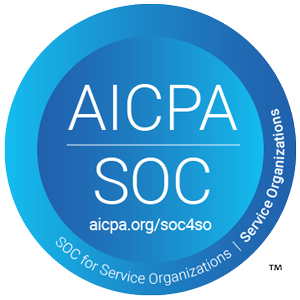Over the last few years I have seen design thinking tools used in all types of situations – as a management philosophy, an operational plan and a way to implement a “sexier” version of continuous improvement. Now design thinking is gradually becoming a staple of innovation programs– and could there be a better purpose for it?
There are two ways design thinking fits organically into the innovation process.
The first is as a means to promote empathy, which makes perfect sense.
“Empathy is at the heart of design. Without the understanding of what others see, feel, and experience, design is a pointless task.” – IDEO’s CEO and president, Tim Brown
After all, innovation has to serve an end user – whether that’s an internal customer or a consumer out in the world. Otherwise it’s simply innovation for innovation’s sake – which is another way of saying, “A waste of resources.”
The second takes this idea and elevates it to include the end user in the process itself. Talk about a game-changer.
Combining disciplines for greater success
We’re at this cool moment in time where a bunch of budding roles and disciplines are coming together in organizations. It’s unlikely you have separate people dedicated to design thinking and Innovation Program Management – right now it’s probably the same person.
If that’s you, part of your job is making sure ideas are fully “cooked” before moving to next stages. That means ensuring you’re answering the right questions, have the right problems outlined and have thought things through from different perspectives – and chosen a singular perspective with which to move forward.
If you use design thinking to ensure that singular perspective is your customer’s, you’re really onto something powerful.
To that end, combining well-suited disciplines to enhance your innovation efforts makes perfect sense. Innovators are already moving toward combining the ideation power of design thinking with the execution principles of disciplines like The Lean Startup to really hone in on the underlying philosophy of customer-centric creation.
I can’t tell you how often I see dialogue on social media where new practitioners ask established practitioners if they should go with design thinking OR Lean Startup for their new innovation practices – I can’t reply “Both!” quickly enough.
Making customers happy with less waste will get your C-suite on board more readily too.
Another way to do that is to involve customers in the design thinking side of things. We already use crowdsourcing to innovate. Crowdsourcing and design thinking are an even more dynamic duo; like chocolate and peanut butter, surprisingly delicious.
Power of the people
How does this work? Similarly to how crowdsourcing works when sourcing ideas for innovation challenges. And it has so many benefits:
- Saving time and scaling efforts – Instead of sending a handful of people out into the field, crowdsourcing brings the field to you, increasing insights from a mere few to hundreds or thousands – from all over the country or world.
- Making use of social collateral – Just as you use an innovation platform to harness ideation, interaction and networking to solve innovation challenges, you can use it for front-end, design thinking research – with the ideas coming directly from those affected by the outcome.
- Making your case to the C-suite – And all of these results are measurable so there’s clear proof of value to offer higher-ups who still need to be sold on innovation efforts.
And because design thinking is built on empathy, it becomes easier to speak to different stakeholders based on their needs and triggers, and to soothe the anxieties that come with trying new things. When the end user has helped create the innovation, it’s clear there’s an audience for it.
The impact of design thinking on innovation going forward
Design thinking’s emphasis on empathy has enormous value in the innovation space and to use in innovation management, but it has much broader merit as well – obviously. As a facilitation and change management tool it reminds me of the evolution of Alex Osterwalder’s Business Model Canvas to Value Proposition Canvas. So I believe we’ll see the “perspective changing” components – those “empathy building” components, being more widely adopted.
As more companies adopt methodologies like design thinking, with a focus on customers and companies, the approach will become second nature. Empathy will become second nature. And there will be a lot more people involved in the design thinking and corporate innovation management processes.
Is design thinking part of your idea management software suite of tools? Why or why not?
Hear more from Ieasha in our Hangouts:
Corporate Innovation 101: How we Got Started
Characteristics & Secrets of RockStar Innovation Program Managers
Making Your Innovation Program Irresistible
Ieasha Taitano is a guest blogger, regular on Brightidea’s Innovation Insights Hangout monthly series and VP of Innovation and Design Thinking at LPL Financial, which is the nation’s largest independent broker-dealer. Ieasha is responsible for developing a new approach to making change at LPL Financial using an Enterprise wide Innovation Strategy and Tools. She is also an avid RV traveler.


